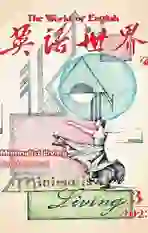A Brief History of Minimalism极简主义简史
2023-05-30孙力/译
孙力/译
Is there a standard definition of minimalist living? Should you define it on your own or adopt someone elses? To answer this, we will first give you a brief history of the term minimalism.
极简主义的生活有没有标准定义呢?你应该对它作出自定义还是采用别人的定义呢?回答这个问题之前,让我们先向你介绍一下极简主义这个词的简要历史吧。
The formal (in the Oxford dictionary) definition of minimalism reveals an aesthetic principle but over time the word has evolved to mean a lot of different things to a lot of different people. This is largely because of the elasticity of the concept of “less is more” and the ability to apply it to lifestyle, art, fashion, architecture, literature, music and home decor. Here are a few highlights from the past 200 years:
极简主义的正式定义(采用牛津词典的说法)揭示了一种美学原则,但是这个词的意义与时俱进地演变,其含义对于很多不同的人来说差别很大。这很大程度上是因为“少即是多”这个概念相当有弹性,并且它可以应用于生活方式、艺术、时尚、建筑、文学、音乐和家居装饰等多种方面。下面就从过往200年撷取几个亮点吧。
1800—1850: introducing simple living in America
1800—1850:美國引入简单生活理念
A transcendentalist philosophy takes hold in America and is popularized by the likes of Ralph Waldo Emerson and Henry David Thoreau.
超验主义哲学在美国扎根,并由拉尔夫·沃尔多·爱默生和亨利·戴维·梭罗这样的人物推广开来。
They held the idealistic view that insight and enlightenment can be gained through solitude and simplicity, such as illustrated in the book Walden.
就像《瓦尔登湖》一书所展现的,他们秉持理想主义的观念,认为可以通过独处和生活简单化来获得洞察力与启示。
While not expressly stated as minimalism at this time, this new approach to simplicity is something that we would continue to see evolve for years to come.
尽管这时还没有明确提出极简主义的说法,但此后若干年,我们会看到这种简朴的新型生活方式在持续演变。
1920—1930: the elevated design era
1920—1930:设计提升年代
The modern style that the word minimalism is most associated with was heavily influenced by the Bauhaus Schools ideal of balancing beauty with utility in product design.
与极简主义一词最密切联系的现代风格受到包豪斯学校产品设计理念的重大影响——其理念致力于平衡产品设计的美感和功能性。
In the Bauhaus Era, teachers and students of the school offered an alternative to uninspiring manufactured products and reimagined the role art could play in society.
在包豪斯时代,学校师生为平平无奇的工业化产品提供了另外的可能,对艺术在社会中可以发挥的功用展开了新的想象。
By injecting creativity and thoughtfulness into the production of otherwise cheap and ubiquitous items, the Bauhaus School inspired the concept of elevated design for everyday life.
通过在生产随处可见的廉价产品的过程中注入创意和思考,包豪斯学校启发了为日常生活提升设计的概念。
1960—1970: minimalist expansion
1960—1970:极简主义扩张
The word minimalism itself gains popularity amongst certain groups of young artists in the 60s who resisted the stifling conventions of fine art.
1960年代,某些年轻艺术家群体抗拒美术的沉闷惯例,而极简主义这个词本身就获得了他们的青睐。
Minimalism started being used as a colloquial term in writing, painting, architecture, and other aesthetic, design, and creative fields. Minimalists started to break off from the Abstract Expressionism of previous generations, removing the storytelling or metaphors from their art and focusing on industrial materials, white space, and sleek, simplistic works.
极简主义开始被用作一种非正式术语,出现在写作、绘画、建筑及其他美学、设计和创意领域。极简主义者开始脱离前辈的抽象表现主义,从艺术作品中去除叙事或者隐喻,专注于工业原料、空白空间和流畅简洁的作品。
Moreover, in the 70s Dieter Rams introduced his principles of good design and ever since has been praised as one of the most influential figures in the pared back, user-friendly product design trend thats so commonly called minimalist design.
此外,1970年代,迪特·拉姆斯提出了他的优秀设计原则,自此,在化繁为简、用户友好的产品设计潮流中,他始终被誉为最有影响力的人物之一——这种设计潮流通称极简主义设计。
1980—2000: adaptation of simple living
1980—2000:适配简单生活
The next stage of the history of minimalism saw an ongoing increase in the simple art and simple living movements. The slow food movement was initiated after the opening of a McDonalds was protested in Rome. It then inspired similar subcultures in other categories like sustainable fashion and travel.
极简主义历史的下一个阶段见证了简单艺术和简单生活运动日益兴起。麦当劳在罗马开店遭到抗议,继而慢食运动开启。随后,这又在可持续时尚和旅行等领域激发出类似的亚文化。
Supporters of “slowness” resist the modern idea that the fast acquisition and accumulation of more things or experiences is somehow better. They believe quality is preferred over quantity and adjusting your life to a more deliberate pace will help you get the most out of it.
“慢”的支持者们反对这样一种现代观念,即认为快速获取和积累越多物质或经验从某种程度上看似乎越好。他们相信质量胜于数量,将生活调节到更从容的节奏会令人获益更多。
2000—Present: minimalism becomes mainstream
2000至今:極简主义成为主流
The philosophy of simplicity is ages old but within this generation blogging sparked a heightened interest in applying “less is more” as a lifestyle philosophy.
简约哲学由来已久,但博客激发起这一代人将“少即是多”作为一种生活方式的哲学加以应用的高涨热情。
Over the past decade a flood of minimalist gurus turned a philosophy into a fad with 100-item or less challenges, 30-day no shopping contests, 10-things to throw away guides, and so on. People started writing scripts for applying minimalism to different areas of life. However, while well-meaning, sometimes these rules have adverse outcomes.
过去10年,大批极简主义专家把一个哲学概念变成了一种时尚,比如不多于100件生活用品的挑战、30天不购物比赛、扔掉10件物品的指南等等。人们开始创作将极简主义应用于不同生活领域的脚本。但是,尽管这些规则本意良好,有时也会产生负面结果。
At this point if someone tells you they are a minimalist you cant assume you know what they mean. And even if their definition happens to be similar to yours, their interpretation may still be miles away from your thinking. A now ubiquitous term has led to confusion and conflict that overshadows its positive connotation.
现在如果有人告诉你他们是极简主义者,你可不能想当然认为自己了解他们的意思。而且,即使他们的定义恰好和你的相似,他们的解读也许仍然和你的想法相去甚远。一个当今无处不在的词已经导致困惑和矛盾,遮蔽了它原本的积极含义。
While there can be thousands of interpretations of what exactly minimalism means, understanding the history of the art movement and even the principles of thought behind it can help you to apply minimalism however youd like. Drawing on this history of the art that strips away any objects that are not essential can give you inspiration for minimalist living across a number of areas. You dont necessarily have to follow extreme minimalist living to get the benefits or borrow from the minimalist culture.
盡管对极简主义的确切含义可能有无数种解读,但了解艺术运动的历史及其背后的思想原则,可以帮助你以自己喜欢的方式应用极简主义。极简主义就是剥离所有非必需物件,了解其历史,可以激发你的灵感,在多个领域实现极简生活。不必非得追随极端的极简生活,一样可以从极简文化中获益或对其有所借鉴。
